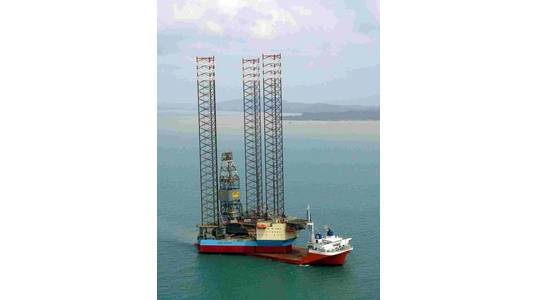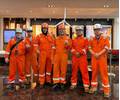
A 78-percent refund on exploration aside, drilling is now so “cheap” in Norway, that the drill bit has become the preferred method for newcomer oil companies to get astride some production — quickly.
That’s the verdict of Aker BP’s new head of exploration, Evy Glorstad-Clark. The company is sifting through assets acquired since the 2014 oil-price downturn, and there’s a clear uptick in its drilling activity from 2018.
Like other oil provinces, Norway has seen the cost of just about all services and products related to exploring for oil and gas plummet since 2014. Now there’s a new reduction, one of risk, and new tech and finance are its stated cause.
It’s now cheaper to drill into an asset than to farm-in to someone else’s, Glorstad-Clark told Norwegian newspaper, DN. She said that while Aker BP’s geologists had been busily seeing the opportunity in other people’s assets, they’re now spinning the drill bit into their own prospects.
“When the price of exploration was high, it cost more to look than to buy,” she was quoted as saying. “Now that’s changed. It just happened. It now costs more to buy-in than to (drill an exploration well).”
That was not the situation here 10 years ago. German gas players sought gas volumes by farming in to Norwegian acreage. Now they drill.
Drill-bit risk
Ditto U.K. asset players “of old”. Back in 2008, the cost of a well offshore Norway was well in excess of $100 million, and drilling a well seemed out-of-reach for the “three-men-and-an-office” E&P outfits (however seasoned).
Meanwhile, Aker BP has, since 2014, been busy buying up assets near its own production hubs. When the company formed a joint venture (JV) with BP, it was only a matter of time before it declared an exploration campaign aimed at those very assets (including the 11 mature-area licenses and four discoveries acquired from Total in 2018).
Dry wildcats, like those it saw in the autumn of 2018, don’t help shed costs, however, and they happened despite the company spending $30 million more looking for oil than during the same drill season a year ago. In all, Aker BP (40 percent Aker ASA, 30 percent BP) will have spent an estimated $400 million drilling for hydrocarbons across Norway in 2018 ($226 million in 2017), yet Glorstad-Clark says costs have come down.
The plan for 2018 was to spend $425 million but a drill rig arrived “later” than planned.
With the day-rate costs of hiring offshore vessels and rigs falling by half since the 2014 oil-price collapse, other efficiency measures and technology have helped bring down the costs of drilling.
One of those is an “alliance” of finance and tech undertaken to drill assets quickly. Aker BP CEO, Karl Johnny Hersvik, told shareholders in October that the new drilling approach delivered reservoir access “10 percent” faster than planned at the Kameleon field, site of complex directional drilling. Now, two new wells are being drilled at Frosk and Gekko in the Alvheim area and at the Cassidy prospect, where an exploration well is planned.
They might not all be part of the “alliance” that includes Maersk Drilling and Seapulse, an asset player that is understood to arrange finance for all of a campaign’s drilling rather than “farm-in” as has been the tradition. High-reward assets, “alone”, have to be part of the play.
Financial risk
Aker BP has, in fact, signaled a “large prospect” to be drilled near the already giant Johan Sverdrup field and at Gjokaasen in the Barents Sea. Much of this drilling is understood to be part of the “alliance” targeting 12 offshore wells drilled over two years into a “high-impact” portfolio.
“The scale of the Seapulse drilling program rivals that of many super-majors by number of wells and potential scale and impact of the target prospects, but with a considerably compressed timeline and cost exposure,” a December communique heralded. These wells are said to contain prospects denoting in-place resources of “four billion barrels of oil equivalent”.
Seapulse co-founder and CEO, Scott Aitken, appears to have found a model to remove some risk for operators and hurdles to speedy exploration.
“The business model we have established has the promise to be transformational for the oil and gas industry … Our strategy leverages Maersk Drilling’s technological and operational expertise, whilst giving access to a cherry-picked global prospect portfolio… Seapulse’s strong financial backing gives us the critical advantage of being able to drill and test a statistically de-risked exploration portfolio normally only associated with super-major oil companies.”
So, yes, drilling costs are down — and so is drilling risk.



